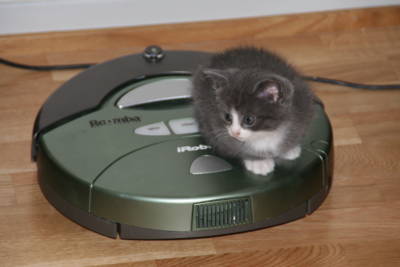This post is part of KQED’s Do Now project. Do Now is a weekly activity for students and the public to engage and respond to current issues using social media. Do Now aims to build civic engagement and digital literacy for learners of all ages. This post was written by the the following youth from the Science News Team within the California Academy of Sciences’ TechTeens program: Mathew L., Maggie Y., Ori L., Sophie H., Darrah B., Alex B. and Alvin S.
Do Now
Are the benefits of using robots in the workforce worth the risk of job loss? #DoNowRobots
How to Do Now
Do Now by posting your response on social media platforms such as Twitter, Instagram, Tumblr, Vine, Flickr, Google +, etc.
Be sure to include @KQEDedspace and #DoNowRobots. Remember: Back up your argument with supporting evidence. Link to legitimate sources that support your view.
Go here for more tips for using Do Now, using Twitter for teaching, and using other digital tools.
Learn More About Robots
Since their introduction into the economy, robots have played key roles in manufacturing and agriculture. Robots are programmed to complete repetitive, menial tasks and are highly efficient. Robots can work virtually nonstop, unlike human workers who need costly job perks like health benefits, time to eat and sleep, and most of all, wages. In the past, robots have been largely confined to the manufacturing industry, but lately robots have been creeping into new industries and aspects of human life. You may even have a robot in your home! Millions of households across the world have robots that vacuum the floor. Robots are not just being used for petty tasks like home cleaning, but are even utilized in scientific labs to carry out monotonous yet precise tasks, such as micropipetting. Thanks to drastic advancements in software engineering, robots are now capable of completing much more complex tasks, and soon, they may completely revolutionize the workplace by superseding millions of human workers.

The Debate
Pros
Robotics are becoming a cheap and efficient source of labor. Machines have been replacing many dangerous or boring human jobs, allowing people to leave the labor industry and start working in more artistic and intellectual fields. According to the company RobotWorx, robots do jobs better suited for machines, allowing humans to apply their knowledge to more deserving tasks. Business owners also favor robots compared to humans, as machines produce more consistent and accurate results at lower costs. According to John Tamny of Forbes magazine, the robot industry “will ultimately be the biggest job [creator]”, and demand even more high-tech jobs in both programming and manufacturing.
Cons
Despite their potential benefits, many people are worried about the effects that automation of simple labor tasks may have on the economy and workforce. Every year, more businesses replace their unskilled workers with automated machines. Within the next 20 years, many jobs, including electrical equipment assemblers, telemarketers, and retail workers, are predicted to have a 95 percent chance or higher of becoming automated. Already, companies such as McDonalds have begun initiatives to replace their human employees by introducing computerized kiosks, which could “reduce required labor by 30 percent.” In addition, there is fear that machines will one day turn on their creators. While this fear originates from science fiction and Hollywood, it might eventually develop into a real threat. Berkeley Robot for the Elimination of Tedious Tasks (BRETT) is a robot, developed at the University of California at Berkeley, that has been programmed with the ability to learn. In a video, BRETT learns through trial and error how to construct a child’s toy. With this kind of learning technology, there is no telling what these machines will be able to accomplish in the not so far future.